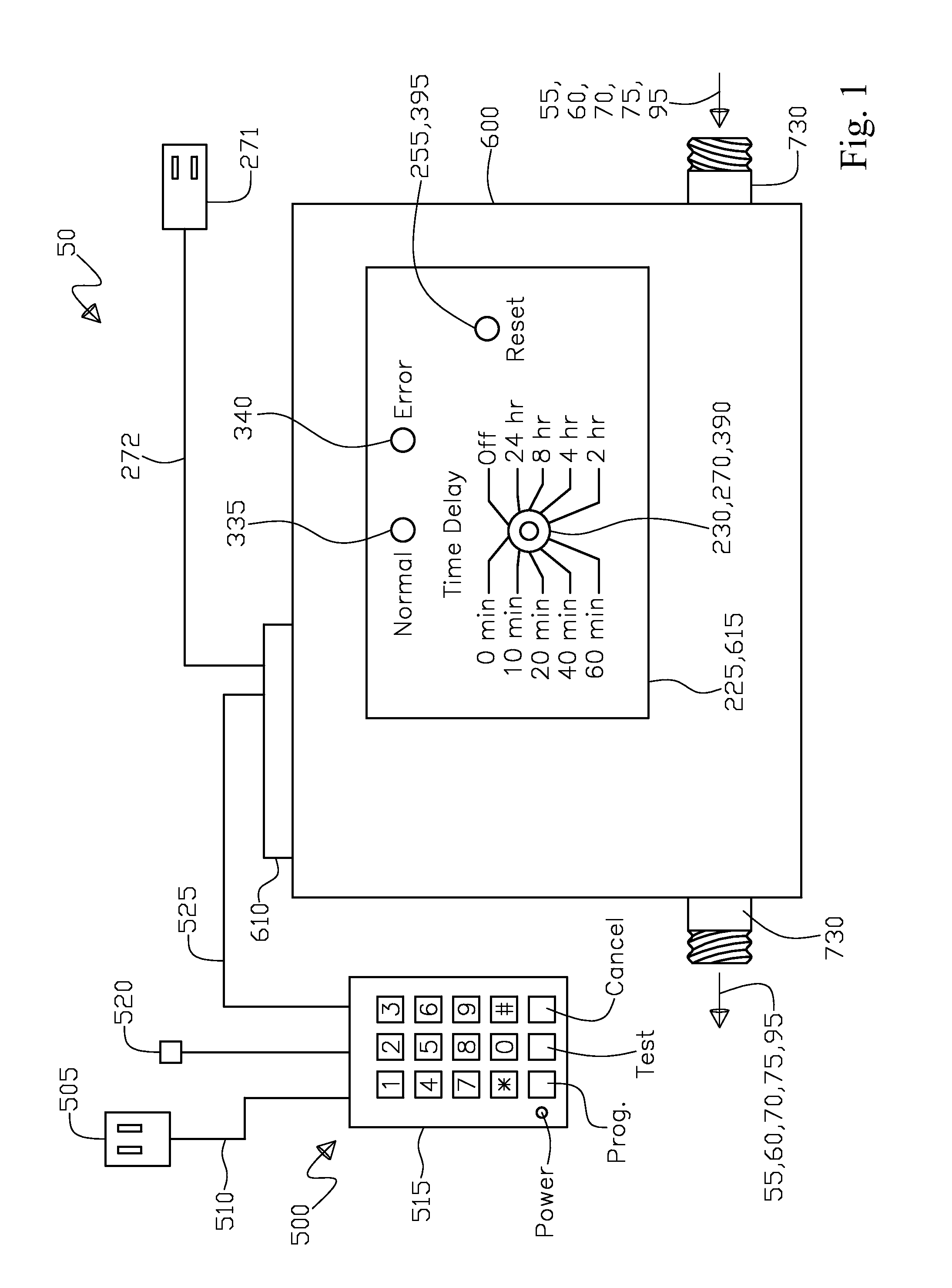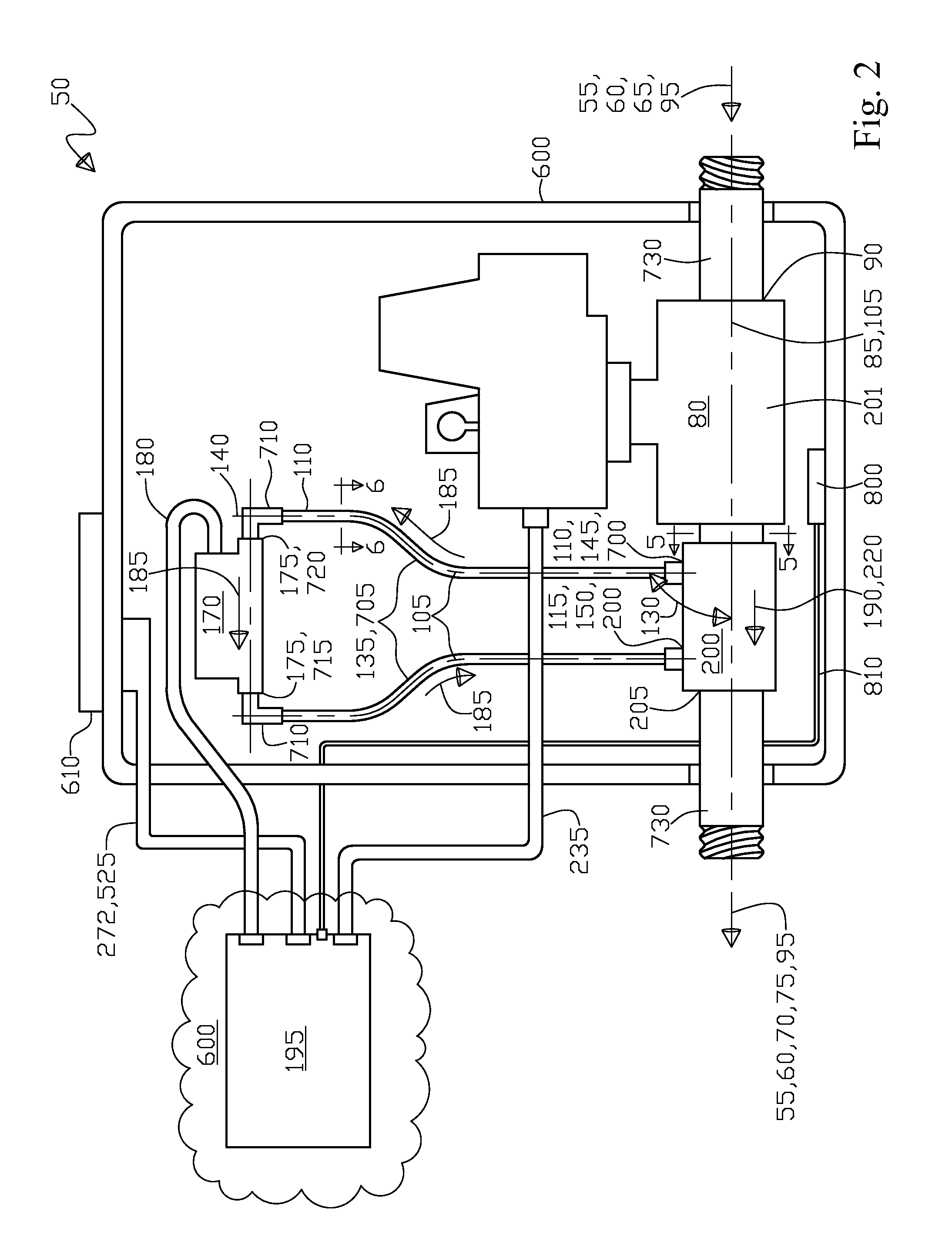However, as a practical matter, having an automated leak detention apparatus everywhere a leak may occur is not realistic due to the multitude of potential leak locations causing undue complication and cost.
Wherein normally without the presence of any type of
leak detection apparatus, a small liquid leakage from a
machine, say for instance hidden underneath a large heavy ice making
machine (that is rarely moved) that has a low volumetric flow rate leak or in other words a seeping leak can cause significant damage to the
machine and / or surrounding adjacent structure prior to being detected.
Unfortunately, the ice machine will continue to work perfectly during its small leakage phase thus not alerting a user to the presence of the slight leakage condition, at least until the surrounding structure suffers significant damage, wherein the leak would more likely be detected.
Thus, this situation can continue for quite some time until extensive damage has occurred in the hidden machine portions and / or support structure, wherein at some later in time point the structural damage eventually becomes obvious, wherein the structural damage from the liquid seepage is more excessive than it should be.
Thus, the result is that the support structure suffers additional damage that is hidden from view in addition to the leaked fluid, typically water or even worse a fluid that is toxic or chemical in nature that could risk further safety, electrical risk, or environmental harm.
Unfortunately,
water damage can most likely occur one the office or home is vacant wherein a frozen
pipe can be burst shutoff valves can fail to say
toilet tanks or for instance refrigerator ice makers can have line ruptures in addition to dishwashers, and items such as broken hoses to washing machines.
The typical damage would include damage to wallboard,
wallpaper, paint, electrical fixtures and wiring, carpeting and padding, vinyl flooring, subflooring, or building structure, plus furniture and other household items.
In addition, items such as financial records, photos, and other irreplaceable items can be destroyed beyond retrieval or repair.
Further, later forming issues can include hazardous molds and the like that will require even more costly and difficult cleanups.
Thus, the
key issues for the
leak detection apparatus involve, small space or size requirements for the apparatus, as the specific placement location for the apparatus may be in a confined area with difficult
accessibility, a further issue in the leak detection apparatus is the sensitivity of generating a perceptible output from a very low liquid
leakage flow rate, usually in the range of about one-third (⅓) of a gallon per minute to detect a leak prior to a significant damage occurring, i.e. catching the leak as soon as possible.
Another issue for the leak detection apparatus is to ideally have a single leak detection apparatus able to cover a multitude of potential leak points for ease of installation and to reduce cost, and in addition for the leak detection apparatus to automatically shutdown the root source of the leakage based upon the detection of leakage to minimize damage either to machines, equipment, or the surrounding structure or environment from leakage damage.
Wilson does not also teach the automated shutting off of the
water supply in the event of a leak occurring when there is no one around the house or water
system, as Wilson requires the manual selectively shutting off of the water system, suggesting that the water system be completely shut off when the homeowner is absent, however, in this case the homeowner could just manually shut off their main water valve without the Wilson system.
Davis does not teach any form of leak detection or water system automatic shut off in the event of a water system leak, as there is no measure of flow rate with a flow meter.
In Cooper, the pressure
detector works via detecting pressure degradation and / or flow rate increase, however,
pressure detection to monitor
low leakage situations would be problematic, as with slow leaks, pressure drop may not even occur as the municipal
water supply will maintain a constant
feed pressure of water into the system unless the flow rate is excessively high causing a water
system pressure drop, the only instance wherein
system pressure drops would detect small leakage is when the system does not have a pressure water or liquid feed, such as a closed off system, however, the teaching is for a municipal constant
water pressure feed system, see column 6, lines 10-15, thus
water pressure sensing would only detect relatively high flow rates.
In operation in Cooper, the flow
detector is used for sensing user demand, in which case there is user demand, then the main valve remains open until user demand ceases, at which time flow rate detection and pressure drop detection would activate closing of the main valve, although teaching of how user demand is really sensed is not present-however, it would typically involve some form of electronic sensor at each
water use appliance, which would be complicated and costly, Cooper does mention using the
timer for a time window in which user demand is assumed thus negating when flow or
pressure sensing would activate closing the main valve, however, this could facilitate a leak being allowed to proceed (i.e. no main valve shut off) if the user demand time window is longer.
Note that there is no need for a flow meter in Maresca Jr., which would be considered undesirable due to the
low leakage flow rates required to be detected being around 0.1 gallon per hour.
 Login to View More
Login to View More  Login to View More
Login to View More 


